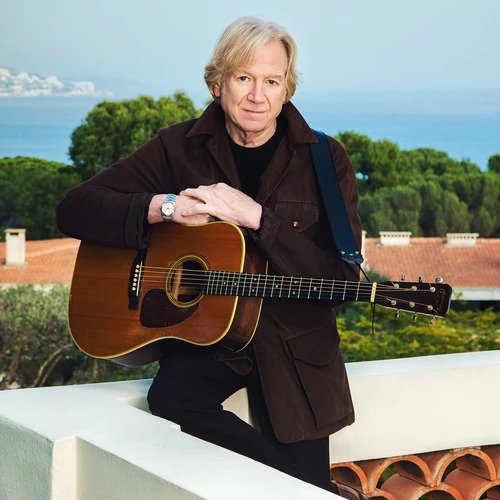
Justin Hayward keeps busy juggling work with Moody Blues, solo career and more
On Aug. 26, Moody Blues’ vocalist, lead guitarist and composer Justin Hayward will stop by the Musikfest Café as part of his North American solo tour. For more than 50 years, Hayward has been writing and playing music, penning songs like “Tuesday Afternoon,” “Question” and “The Voice” that helped to make the Moody Blues one of the most popular bands in the world.
As a solo artist, Hayward had a Top 10 hit with 1978’s “Forever Autumn,” while his 2014 live concert DVD “Spirits…Live” reached No. 1 on the Billboard Video chart. ArtsQuest recently caught up with the legendary artist to talk with him about The Moody Blues, his solo work and what fans can expect during his Musikfest Café concert.
AQ: Last year The Moody Blues performed at Musikfest in Bethlehem. What were your thoughts when you saw the venue, with those towering blast furnaces from the former steel plant right behind the stage?
JH: Oh, love it, love it. Yes, it’s quite an experience, and I do remember it distinctly. Who could forget it? I think we knew it was going to be a good gig when we saw that. It was a great crowd and we all had a great time.
AQ: That old steel mill is now called SteelStacks. It’s undergone a major renaissance thanks primarily to music and art. Justin, you’ve been involved in music since you were very young and you’ve been performing for more than 50 years. What are your thoughts on the role that music and art play in transforming communities?
JH: I think it can make the world a better place, that’s for sure. It can transport people to wonderful times in their lives and you know, fortunately, the music of your youth will stay with you forever. So then the music that you loved then, you love always. That’s my experience anyway, and I can only speak from my experience.
AQ: This summer, you’re back at the Musikfest Café in Bethlehem. How is your approach to solo performances different than when you’re playing with the Moody Blues?
JH: Well, it’s the perfect balance to The Moodies. The Moodies is a big production. It’s quite loud, two drummers, and there’s nothing wrong with that – that’s great. But with the solo performances I can bring my acoustic guitars from home. These are the guitars that I wrote the songs from and I think that’s important to me. I can hear every nuance of the sound of the building. It’s the perfect balance to The Moody Blues. I love that acoustic format, how I made the demos and how I originally wrote the songs, and it’s like I’m coming into my living room in a way.
AQ: You’re joined on stage by finger-style guitarist Mike Dawes. What’s it like performing with him each evening?
JH: He’s one of a new generation of players that comes at the guitar from a different angle. He’s not hampered by the three cords – most of those English and American guitarists in the ’60s were hampered by growing up just with rock and roll. He comes at it from a different point of view and he‘s a remarkable player. You wouldn’t have seen anything like it and I was so thrilled when he agreed to join us for the tour. I love working with him and he’s become a good friend.
AQ: So how does stripping down to an acoustic format allow you to reinterpret the music of The Moody Blues?
JH: It means that I can present the music as solo music and Moody Blues things as I wrote them, as I presented them to the group in the first place. So, you can mirror the songs as they originally started out.
AQ: And you’ve obviously written some legendary songs throughout your career like “Nights in White Satin” and “Tuesday Afternoon.” What are your favorites to still perform live after all these years?
JH: I really love “I Know You’re Out There Somewhere” and “Wildest Dreams” because that was a remarkable time in our lives and for me personally it was a great time. To have chart-single success again when you’re in your early 40s is a wonderful thing. To become recognized in the street, I never thought that would come round again. But there isn’t a song that I don’t like and I’m discovering things that we never did with The Moody Blues like “Watching and Waiting,” “You Can Never Go Home,” “It’s Up To You” – those kind of things. I’m discovering my own songs all over again, and I’m very thankful for that.
AQ: In addition to your solo performances you’re also on the road with The Moody Blues this year. If I’m correct, you’re performing on two different continents, here in the United States as well as in Europe. How do you find time to balance everything in life? What are your pastimes when you’re not touring and recording?
JH: Well, I still spend a lot of time in the studio working for Universal doing The Moody Blues catalogue and taking care of that. And really, I suppose, the time that you’re on tour is the time that you can, in a way, relax. It’s a sort of gypsy life and you know all you can do is the tour, whereas when you’re home you’re trying to fix stuff, fix tours and work out all the logistics. But now (on the road) all of that’s been done so we can enjoy it and enjoy the shows every night, so it’s a real pleasure. I don’t have much else in my life up from that, but I love to play and you know The Moodies, we’re taking a lot of time off later on in the year. But that wasn’t for me so I intend to keep doing my solo tour when The Moodies aren’t working.
AQ: Great, that was going to lead into my last question that I have. What’s next for you? Is there another solo project or a Moody Blues album on the horizon that fans can look forward to?
JH: I’m not sure about a Moody Blues album; maybe something audio-visual from The Moodies – I think that would probably be the way we go. I think I’ll always be doing new songs myself, and I think I have a great label that really wants anything that I can deliver. So I think I’ll be doing new stuff – videos and DVDs as well as music. I think that will continue as long as I’m able to.
